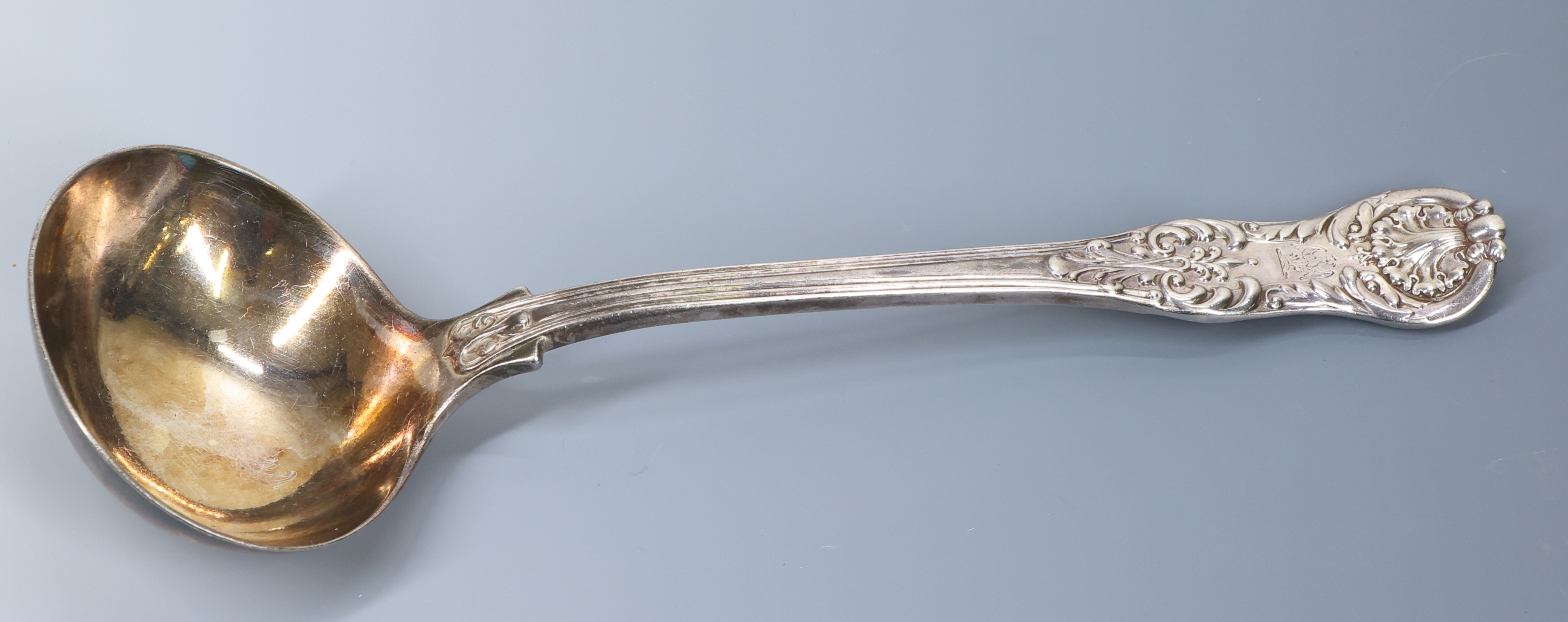Mothers of Silver: Celebrating the Legacy of 18th- and 19th-Century Female Silversmiths in the Weis
-2__primary.jpg?v=1746735433)
Mothers of Silver: Celebrating the Legacy of 18th- and 19th-Century Female Silversmiths in the Weiss-Harmen Auction
Edited by Christian Answini & Adrian Martinez | Fine Art Department
Among the standout offerings: a meat skewer by Louisa Courtauld and her son Samuel Courtauld II; a finely worked acorn spoon by Elizabeth Jackson; a sauce ladle by Mary Chawner; and a set of striking salts by Hannah Northcote. These women—some widows stepping into family trades, others pioneers in their own right—challenged gender norms to leave behind enduring legacies in sterling silver. And while these items take center stage, they’re joined by a wider ensemble of historically significant material: a rare Paul Revere portrait brooch, fine jewelry from Boucheron and Cartier, early mourning textiles, samplers, Chinese export porcelain, 17th-century tobacco boxes, and more. Let’s explore the fascinating women behind the silver and why this is one auction no collector or institution should miss.
Mothers of Craft: Women Who Forged Their Place in Silver History
In an era when women were rarely acknowledged in trades, silversmithing required not just talent but also access to tools, capital, and a hallmark—all tightly controlled by guilds and family ties. Yet through inheritance, marriage, or exceptional drive, several women made their way into the field. Louisa Courtauld is among the most recognized. Of Huguenot descent, she took over the family business after the death of her husband, Samuel Courtauld I. She soon took her son Samuel II as a business partner, and the silver meat skewer in our auction shows their joint hallmark, reflecting not just a familial legacy, but one of collaboration across generations. She wasn't simply a caretaker of the business—she was an innovator whose work helped sustain the firm's prominence in Georgian London. Her inclusion in this auction offers collectors a tangible connection to one of the few documented female silversmith dynasties in Britain.
.JPG)
2. Marking Their Names: From Elizabeth Jackson to Mary Chawner
Each female silversmith who registered a mark defied expectations. Elizabeth Jackson (Oldfield), active in the late 1740s, is represented in the Weiss-Harmen collection by a picture back acorn spoon, a form that blends everyday function with subtle elegance. Jackson’s work is scarce; her output was limited and seldom appears at auction. Her mark, carefully struck into this spoon, is not just a signature—it’s a testament to her brief but determined entry into a male-dominated guild system. Fast forward nearly a century to Mary Chawner, whose 1837 sauce ladle demonstrates both aesthetic refinement and the staying power of women in the trade. Like Louisa Courtauld, Mary inherited her husband’s workshop but quickly proved she was more than a placeholder. Her work helped transition the Chawner firm into a leading producer of flatware in the early Victorian era. These objects offer more than fine silver—they preserve the personal and professional stories of women who used their talent to claim a seat at the workbench.
.JPG)
3. Preserving Heritage: Collecting Silver with a Historical Eye
For museums and collectors seeking material with layered significance, these works of silver are more than decorative. They’re deeply tied to broader narratives of women’s labor, family enterprise, and artisan networks in 18th- and 19th-century Britain.
The pair of Georgian salts by Hannah Northcote, another featured lot, exemplifies how female makers blended style and function. Northcote registered her mark in 1798, after the death of her husband Thomas. Unlike many widows who quickly left the trade, she continued producing for over a decade. Her clean neoclassical forms were well-suited to the shifting tastes of the period—and remain just as appealing to collectors today. The presence of four named female makers in a single auction is unusual and historically meaningful. It reflects the dedication of the Weiss-Harmen collector to preserving items with documentary value, not just aesthetic merit.
.JPG)
Beyond the Silver: A Collector's Trove of Historical Material
While these female silversmiths provide the heart of this blog, the May 29th Weiss-Harmen Auction features a wide range of exceptional items that complement the silver offerings and deepen the historical context:
A portrait brooch attributed to Paul Revere, highlighting early American craftsmanship and patriot-era memory.
- Victorian “eye” jewelry and mourning pieces, tied to the personal and emotional language of 19th-century loss and remembrance.
- A circa 1774 flamestitch purse, richly worked and indicative of elite female domestic artistry.
- Early samplers and mourning textiles, offering insight into female needlework traditions.
- Chinese export porcelain, 17th-century Dutch tobacco boxes, bookplates, and Continental currency, rounding out a curated selection of global and domestic material culture.
Together, these objects form a timeline of craftsmanship, personal expression, and social history.
Honoring the Legacy—And Looking Ahead
As Mother’s Day approaches, this auction provides a unique moment to honor the often-unrecognized women whose skill and resilience helped shape the decorative arts landscape. Whether you’re a collector searching for marked silver with historical depth, a curator assembling an exhibit on gender and trade, or simply someone fascinated by untold stories from the past, the Single Owner Weiss-Harmen Auction offers a rare opportunity. Don't miss the chance to explore these remarkable pieces and their makers—from Louisa Courtauld to Mary Chawner, from the precision of silverwork to the quiet power of mourning textiles. Join us May 29th, 2025, and experience the stories these objects tell. Browse the full catalog and register to bid now at AlderferAuction.com.

.JPG)
.JPG)










